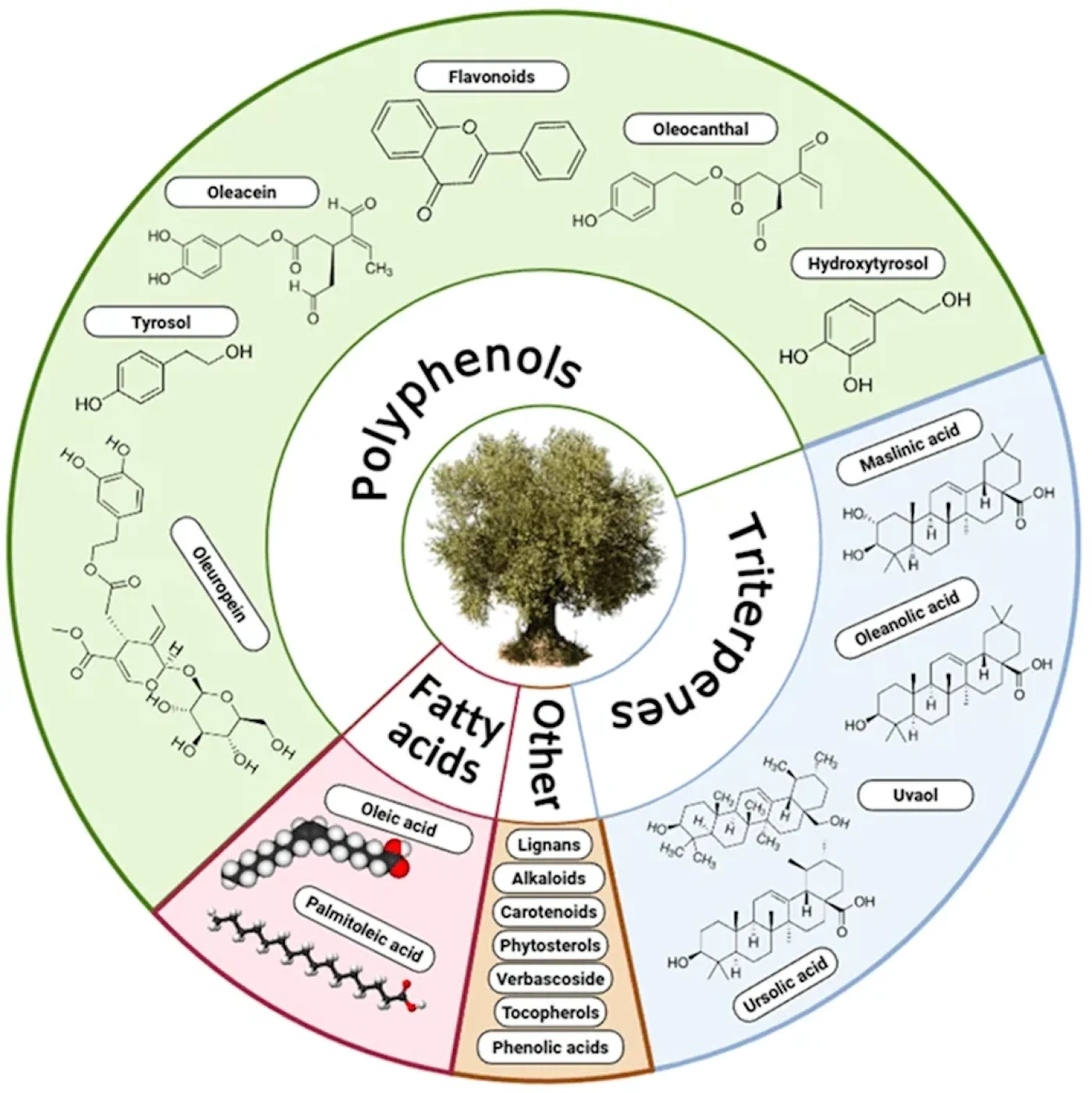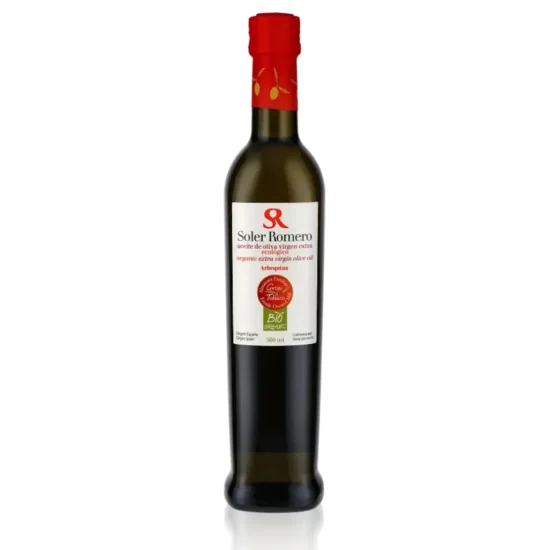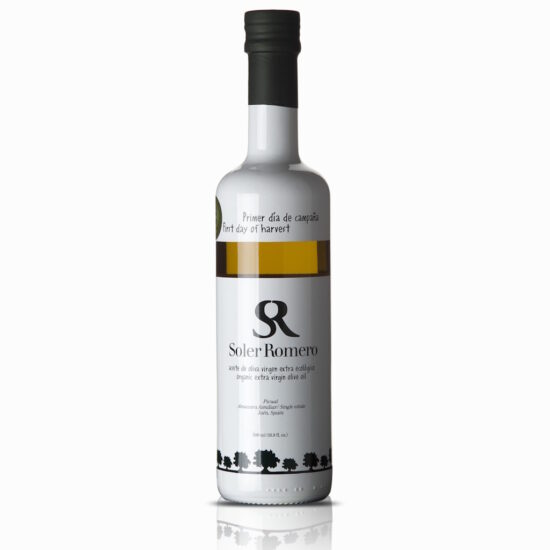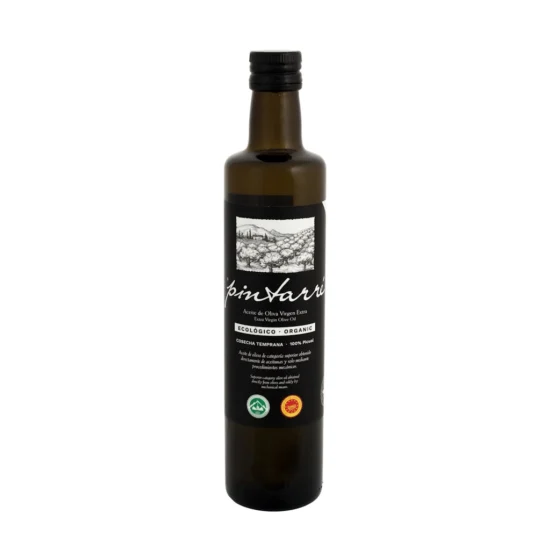
Recent research has explored how bioactive compounds derived from the olive tree, such as polyphenols, secoiridoids, and triterpenes, modulate the gut microbiota and promote gut health. A study published in the journal Foods synthesized the evidence on the effects of these compounds on microbiota composition and function.
The olive tree, native to the Mediterranean region, is valued for its oil and fruit. Its various parts contain functional ingredients and bioactive compounds.
Phenolic compounds, such as flavonoids, phenolic acids, and polyphenols, are the most studied for their diverse biological activities. The olive tree contains more than 170 polyphenols, known for their antioxidant properties and prebiotic effects.
Oleacein exhibits antioxidant, anti-inflammatory, and anti-atherosclerotic properties. It is one of the most abundant and chemically active phenols in EVOO.
This compound is formed by hydrolysis of oleuropein during olive processing, transforming it into an amphiphilic molecule capable of dissolving in both aqueous and lipid environments. Its dual solubility allows it to integrate into particles such as low-density lipoproteins (LDL), protecting them from oxidation, a crucial step in the formation of arterial plaques.
Unlike oleocanthal, oleacein does not inhibit COX enzymes, but rather modulates the inflammatory response by reducing the expression of proinflammatory cytokines such as TNF-α and interleukins.
Clinical studies have linked the consumption of oleacein-rich EVOO with improvements in metabolic health (reduced BMI and glucose) and decreased inflammation. Furthermore, preclinical research suggests neuroprotective potential, with anti-inflammatory and antioxidant activity observed in multiple sclerosis models, as well as a positive impact on neuroplasticity.
Olive oil contributes to health not only through its high MUFA content but also through its diverse bioactive compounds. These compounds interact bidirectionally with the gut microbiota. Microbes transform olive oil constituents into new metabolites, and these compounds in turn reshape the microbial community, promote beneficial taxa, increase the production of short-chain fatty acids (SCFAs), and restrict harmful microbes.
The lipid matrix of olive oil facilitates the intestinal absorption of phenolic compounds and fosters microbial communities associated with reduced inflammation. The bioactive compounds in olive oil modulate the gut microbiota, promoting a balanced microbial ecosystem, increasing the integrity of the gut barrier, and reducing inflammation.
These compounds have demonstrated therapeutic potential in gastrointestinal (GI) disorders such as colitis, intestinal inflammation, and obesity.
It is important to note that these benefits may derive from the synergistic action of several compounds, not from a single component in isolation.
Despite the promising findings, there are significant challenges before these results can be translated into clinical recommendations. Much of the current evidence comes from animal studies, and the results may not be directly applicable to humans due to genetic, dietary, and physiological differences. The researchers also point out the difficulties in standardizing olive oil composition for studies and the natural variability of the human gut microbiota, which makes it difficult to draw universal conclusions. Well-designed, long-term human clinical trials are needed to confirm these results and better understand individual responses.
In summary, secoiridoids, polyphenols, and triterpenes derived from olive oil establish a two-way communication with the gut microbiota. This interaction shapes the production and balance of microbial metabolites, including SCFAs, neurotransmitters, phenolic derivatives, and secondary bile acids. Translating this knowledge into functional products and dietary recommendations will require multidisciplinary studies integrating clinical trials with systems biology and multi-omics approaches. Deepening mechanistic knowledge and addressing these research gaps could fully unlock the therapeutic potential of olive bioactives for metabolic, inflammatory, and gut-brain axis-related disorders.
Important Note: aceitedelcampo.com promotes the consumption of extra virgin olive oil for its culinary qualities and health benefits. However, no medication or current treatment should be replaced without the guidance of a healthcare professional.




ALZAYT EXPORT SL
info@aceitedelcampo.com
C/ Eduardo Bosca 19, 2-5
46023 Valencia
Subscribe and receive a coupon by email for your next purchase.